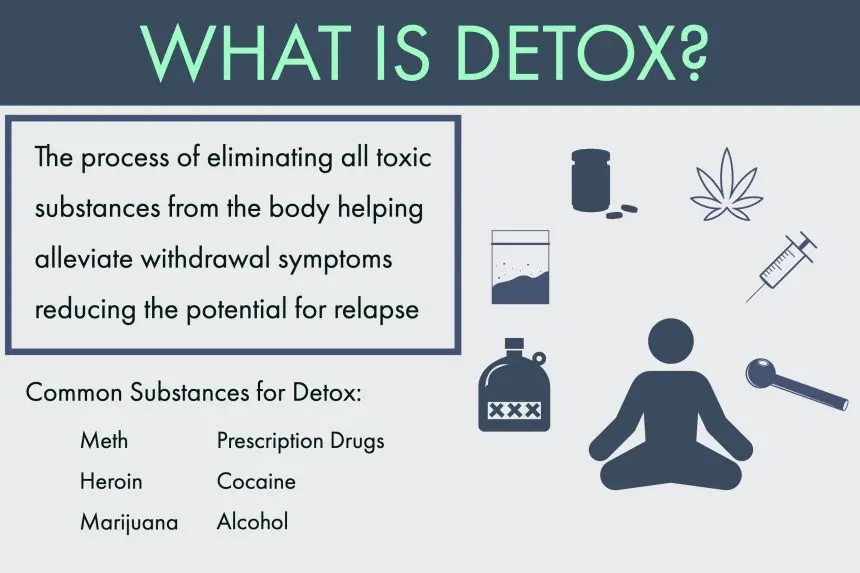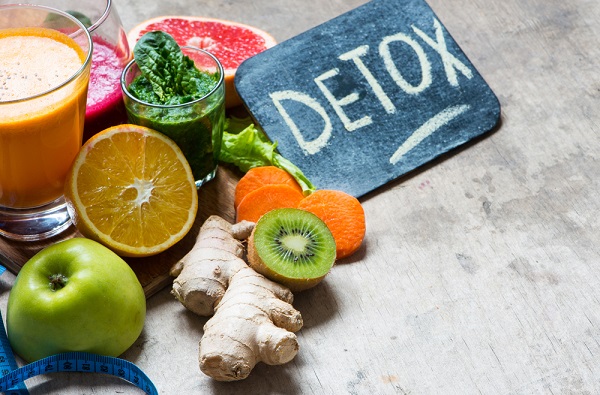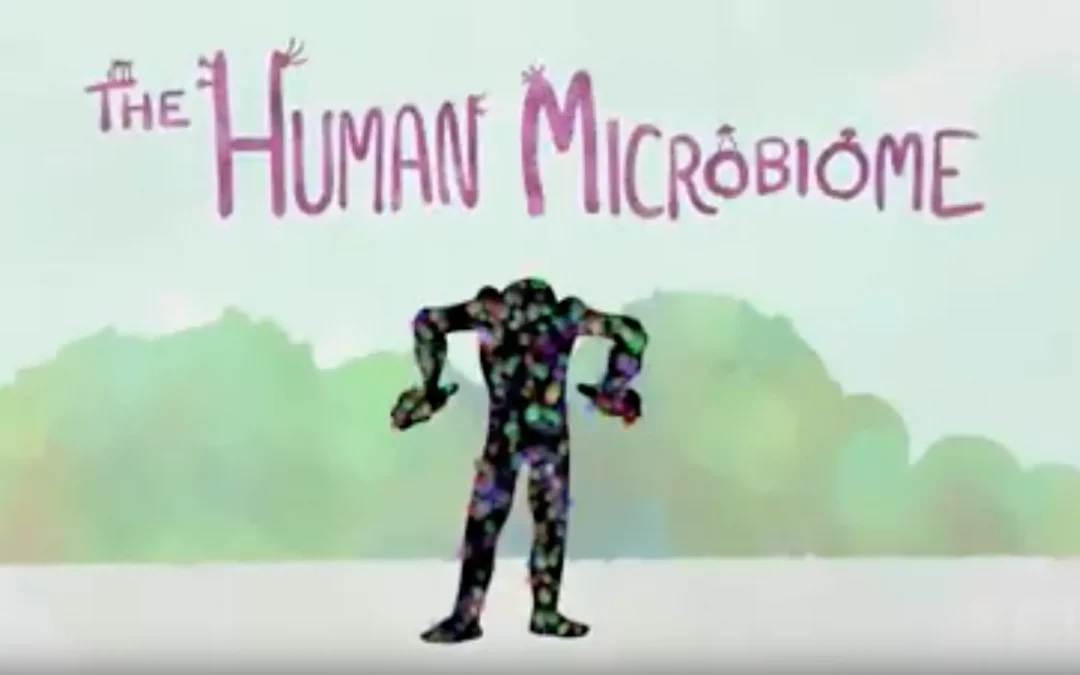Spirulina is an excellent source of proteins, vitamins, lipids, minerals, carbohydrates, nucleic acids, enzymes and pigments. It is useful in human nutrition, due to the high quality and quantity of its protein (60%-70% of its dry weight). Tryptophan, the natural amino acid precursor in 5-HT biosynthesis, increases serotonin synthesis in the brain. serotonin synthesis mostly will depend on numerous factors including the free plasma tryptophan levels, the plasma levels of tryptophan relative to the other large neutral amino acids, the activity of the system that transports the large neutral amino acids into brain, the gene expression of tryptophan hydroxylase, degradation of tryptophan hydroxylase, compartmentalization of tryptophan and tryptophan hydroxylase in brain cells. The best ways of mental health recovery and prevention are nutritional therapy by supplementing specific nutrients like tryptophan. Such supplementation can help for controlling and preventing mental illness like depression, bipolar disorder, schizophrenia, eating disorders and anxiety disorders, attention deficit disorder/attention deficit hyperactivity disorder (ADD/ADHD), autism, and substance use disorder.
INTRODUCTION
Arthrospira (Spirulina) are multicellular and filamentous blue‐green algae that has gained considerable popularity in the health food industry and increasingly as a protein and vitamin supplement to aquaculture diets. It grows in water, can be harvested and processed easily and has very high macro‐ and micro‐nutrient contents. It has long been used as a dietary supplement by people living close to the alkaline lakes where it is naturally found – for instance, those living adjacent to Lake Chad in the Kanem region have very low levels of malnutrition, despite living on a spartan millet‐base diet. In many countries of Africa, it is still used as human food as a major source of protein and is collected from natural water, dried and eaten. It has gained considerable popularity in the human health food industry and in many countries of Asia it is used as protein supplement and as health food.1
Spirulina grows abundantly around the world in very alkaline, mineral‐rich, largely pollution‐free, soda lakes. It thrives in very warm waters of 32 to 45 0C (and has even survived in temperatures of 60 0C. Certain desert‐adapted species will survive when their pond habitats evaporate in the intense sun, drying to a dormant state on rocks as hot as 700C. In this dormant condition, the naturally blue‐green bacteria turn a frosted white and develop a sweet flavor as its 71% protein structure is transformed into polysaccharide sugars by the heat. In fact, the hotter it gets and the more the mineral salts concentrate as water evaporates the faster and more prolifically Spirulina grows.1, 2
Significantly the most fertile valley of soda lakes with heavy Arthrospira growth today lies in Africa. In East Africa, the Great Rift Valley begins in Ethiopia and runs vertically through desert wastelands for hundreds of miles linking Ethiopia, Kenya, Tanzania, and Botswana. This valley floor is lined with several large soda lakes. These lakes are large basins concentrating huge quantities of mineral salts leached from the volcanic soils by rainwater runoff over millennia. Along with the intense heat and sunlight of the area, these lakes provide the perfect growing conditions for Spirulina.3, 4 In Ethiopia, three soda lakes, Lake Arenguade (Hadho) (approx. 3 km south of Bishoftu), Lake Kilole (approx.14 km East of Bishoftu) and Lake Chitu (approx. 37 Km west of Shashemene nearby Senbete Shala) were known as lakes rich with Spirulina. But Kenya and Chad are the spirulina “bread baskets”. In Kenya‐ Lake Bogoria (11+ square miles), Lake Elementita (7+ square miles), Lake Magadi (29+square miles), Lake Nakuru (30 square miles), and Lake Turkana (2,325 square miles) contain quantities of Spirulina.3, 4
Since 1970, Spirulina has been analyzed chemically. It has been shown to be an excellent source of proteins, vitamins, lipids, minerals, carbohydrates, nucleic acids, enzymes and pigments. It is useful in human nutrition, due to the high quality and quantity of its protein (60%‐70% of its dry weight). The nutritive value of a protein is related to the quality of amino acids, digestibility coefficient, as well as by its biological value. Spirulina contains essential amino acids; the highest values are leucine (540 mg per 10m), valine (400mg per 10g) and isoleucine (350mg per 10g) and tryptophan (90mg per 10g). Denaturation of Arthrospira protein is observed when it is heated above 670C, at neutral aqueous solution. Hydrophobic regions interaction during heating and hydrogen bonds formation during cooling are aggregation and gelation factors of Arthrospira protein.4‐7
TRYPTOPHAN AS A PRECUSOR’S SEROTONIN
Tryptophan, the natural amino acid precursor in 5‐HT biosynthesis, increases 5‐HT synthesis in the brain and, therefore, may stimulate 5‐HT release and function. Since it is a natural constituent of the diet, tryptophan should have low toxicity and produce few side effects. Based on these advantages, dietary tryptophan supplementation has been used in the management of neuropsychiatric disorders with variable success.8 The rate of serotonin synthesis mostly will depend on numerous factors including the free plasma tryptophan levels, the plasma levels of tryptophan relative to the other large neutral amino acids, the activity of the system that transports the large neutral amino acids into brain, the gene expression of tryptophan hydroxylase, degradation of tryptophan hydroxylase, compartmentalization of tryptophan and tryptophan hydroxylase in brain cells.9 The serotonergic system forms a diffuse network within the central nervous system and plays a significant role in the regulation of mood and cognition. The gut‐brain axis is a bi‐directional system between the brain and gastrointestinal tract, linking emotional and cognitive centres of the brain with peripheral functioning of the digestive tract. An influence of gut microbiota on behavior is becoming increasingly evident, as is the extension to tryptophan and serotonin, producing a possibility that alterations in the gut may be important in the path physiology of human central nervous system disorders.10 Dysfunction of the serotoninergic system has long been suspected in major depression and related disorders. Drug‐free depressed patients have lower than normal concentrations of serotonin metabolites in cerebrospinal fluid and post‐mortem brain tissue, lower than normal plasma tryptophan concentrations, and an increase in the density of brain binding sites for serotonin. Serotonin, neurotransmitter in the brain, is made up of the amino acid tryptophan. A deficiency in one or both of these amino acids is associated with low mood and aggression. Tryptophan hydroxylase, the rate‐limiting enzyme on the pathway from tryptophan to serotonin, is not normally saturated with tryptophan. In humans, increasing tryptophan levels can increase serotonin synthesis as much as twofold,11 while decreasing tryptophan availability can cause a substantial decline in serotonin synthesis and turnover.12 When tryptophan is given to increase serotonin synthesis, a dose of 6 g (about six times the normal daily dietary intake)13 is enough to saturate tryptophan hydroxylase and double the rate of serotonin synthesis.14, 15 However dietary modification and eating balanced food that can improve brain concentration of amino acid tryptophan is a good option to minimize side effect and improve compliance of patients.
TRYPTOPHAN DEPLETION RELATED MENTAL DISORDER
TRP depletion causes clinically significant depressive symptoms in remitted depressed patients taking medication. A study by Delgado and others in 1990 found that TRP depletion caused a transient depressive relapse in 67% of depressed patients who recently had therapeutic antidepressant responses to some medications.16 The most common mental disorders that are currently prevalent in various countries are depression, bipolar disorder, schizophrenia, substance use disorder and obsessive‐compulsive disorder.17, 19 Low brain serotonin (5‐HT) levels or function have been implicated in various types of psychopathology, including depression, suicide, aggression, anxiety, and bulimia.9 A notable feature of the diets of patients suffering from mental disorders is the severity of deficiency in these nutrients.20 Studies have indicated that daily supplements of vital nutrients are often effective in reducing patients’ symptoms.21 Supplements containing amino acids have also been found to reduce symptoms, as they are converted to neurotransmitters which in turn alleviate depression and other mental health problems.20 Mood disorders such as major depression are common illnesses with considerable morbidity and significant mortality. An imbalance in serotonin brain chemical which is derived from precursor tryptophan (5‐hydroxytryptamine; 5‐HT) is critically involved in the symptoms and development of clinical depression.22 This is a clear indication of role of tryptophan in alleviating depression.
TRYPTOPHAN SUPPLEMENTATION FOR MENTAL DISORDER
This can indicates the best ways of mental health recovery and prevention is nutritional therapy through supplementing nutrition and following a good dietary practice. These may be appropriate for controlling and to some extent, preventing depression, bipolar disorder, schizophrenia, eating disorders and anxiety disorders, attention deficit disorder/attention deficit hyperactivity disorder (ADD/ADHD), autism, and substance use disorder.21 Majority of psychiatric medication including antipsychotic and antidepressant have own side effects.20 This can leads patients not to comply their medication and families to neglect the affected individual and increase health cost. This can also increase length of stay in the hospital, professional liability and rate of complication.23 This usually causes the patients to skip taking their medications. Such noncompliance is a common challenge for health care provider and families later it committing suicide or being institutionalized and increase mortality rates.24 Majority of individuals are not aware of what, how and when to eat. This shows that they are not aware the bond between diet and health rather they easily observe the link between nutritional deficiencies and physical illness. Mental illness is resulted because of an imbalance of brain chemical leading as a biochemical and emotional based. A change in brain signal transmission at the level of chemical synapse are essential in the development of mental disorders or a change in a neurotransmitter’s chemical structure, or an imbalance at any point in this complex process, may affect emotions, moods, thoughts, and behaviors.25, 36 Hence nutrition can play in the onset as well as severity and duration of the illness.21Depression is a disorder associated with major symptoms such as increased sadness and anxiety, loss of appetite, depressed mood, and a loss of interest in pleasurable activities. Without an immediate intervention, it can negative consequences like committing a suicide.18 Low level of brain chemical or neurotransmitters like serotonin, dopamine, noradrenalin, and γ‐amino butyric acid (GABA) are often associated with depression.17‐21 Different study shows that, the amino acids tryptophan, tyrosine, phenylalanine, and methionine are often supportive in treating many mood disorders including depression.26‐28, 37 Injection of tryptophan especially with an empty stomach will easily converted in to serotonin and helps in calmness of the individual and can helps an individual to have aquality sleep. This restoration or improving the level of serotonin that can treat depression is an indication of that the cause of serotonin deficiency is diet.27‐31, 35 Concentrations of cerebrospinal fluid (CSF) 5‐ hydroxyindoleacetic acid (5‐HIAA), the principal metabolite of the neurotransmitter serotonin, leads serotonin turnover or brain concentration of serotonin.33 This can leads anxiety and impulsive control, suicidality, depression and alcoholism.32‐34
CONCLUSION
Spirulina is a good source of most nutrients needed for our body especially for our brain. As most mental illness is resulted from an imbalance in brain chemical at the level of the synapse, focusing on nutritional therapy is one of the best ways of improving mental disorder. Because Medications achieve their intended effects, improved compliance with medication, less need for additional medication or higher dosages, fewer caloric or nutrient supplements are required, adverse side effects are avoided, optimal nutritional status is preserved, accidents and injuries are avoided, disease complications are minimized, the cost of health care services is reduced and there is less professional liability. Therefore, Spirulina is the most important creature in this planet which is a best source of for freely available it can be the best option to improve the amino acid and other nutrient required for our mental health.
REFERENCES – ARTICLE LINK
1. Gao L, et al, 2007. Widely predicting specific protein functions based on protein‐protein interaction data and gene expression profile. Sci China C Life Sci 50(1):125‐34
2. Gatugel Abdulqader, Laura Barsanti & Mario R, 2000. Tredici, Harvest of Arthrospira platensis from Lake Kossorom (Chad) and itshousehold usage among the Kanembu
3. Elizabeth Kebede, Gunnel Ahlgren , 1996. Optimum growth conditions and light utilization efficiency of Spirulina platensis (= Arthrospira fusiformis) (Cyanophyta) from Lake Chitu, Ethiopia.
4. BefekaduTeshome and Genene Tefera, 2008. Isolation and Identification of Lactic Acid Bacteria from spirulina.
5. Dagnelie PC, van Staveren WA, van den Berg H, 1991. Vitamin B‐12 from algae appears not to be bioavailable.
6. Belay, A., Ota, Y.1993. Current knowledge on potential health benefits of Spirulina.
7. Hayashi N, et al. (1996) Genetic interaction of DED1 encoding a putative ATP‐dependent RNA helicase with SRM1 encoding a mammalian RCC1 homolog in Saccharomyces cerevisiae. Mol Gen Genet 253(1‐2):149‐56
8. National Institute of Mental Health: Depression. National Institute of Mental Health. 2000. (US Department of Health and Human Services, Bethesda (MD) [reprinted September 2002).
9. S. Nishizawa, C. Benkelfat, S. N. Young, M. Leyton, S. Mzengeza, C. De Montigny, P. Blier and M. Diksic. Differences between Males and Females in Rates of Serotonin Synthesis in Human Brain. Proceedings of the National Academy of Sciences of the United States of America, Vol. 94, No. 10 (May 13, 1997), pp. 5308‐5313.
10. Jenkins TA1, Nguyen JC2, Polglaze KE3, Bertrand PP4, 2016. Influence of Tryptophan and Serotonin on Mood and Cognition with a Possible Role of the Gut‐ Brain Axis. 2016 Jan 20;8(1). pii: E56. doi:10.3390/nu8010056.
11. Murray CJL, Lopez AD. The global burden of disease. World Health Organization. 1996: 270.
12. Bell C, Abrams J, Nutt D. Tryptophan depletion and implications in psychiatry. British journal of psychiatry. 2001. 178, 399‐405.
13. American psychiatric A: Diagnostic and statistical manual of mental disorders. 4th ed. Washington DC:2000
14. Shaheen Lakhan SE, Vieira KF. Nutritional therapies for mental disorders. Nutr Jr. 2008; 7:2. [PMC free article] [PubMed].
15. Brown GL, Ebert MH, Gover PH, Jimerson DC, Klein WJ, Bunney WE, et al. Aggression, suicide and serotonin: Relationships to CSF amine metabolites. Am J Psychiatry. 1982; 139:741–6. [PubMed]
16. Delgado PL, Charney DS, Price LH, Aghajanian GK, Landis H, Heninger GR (1990): Serotonin function and the mechanism of antidepressant action: Reversal of antidepressant-induced remission by rapid depletion of plasma tryptophan. Arch Gen Psychiatry 47:411–418.
17. Rush AJ. The varied clinical presentations of major depressive disorder. J Clin Psychiatry. 2007; 68:4–10. [PubMed]
18. National Institute of Mental Health: Depression. National Institute of Mental Health. 2000. (US Department of Health and Human Services, Bethesda (MD) [reprinted September 2002]
19. Diehl DJ, Gershon S. The role of dopamine in mood disorders. Comp Psychiatry. 1992; 33:115–20. [PubMed]
20. Stockmeier CA. Neurobiology of serotonin in depression and suicide. Ann N Y Acad Sci. 1997;836:220–32. [PubMed]
21. Van Praag HM. Depression, suicide and the metabolism of serotonin in the brain. J Affect Disord. 1983; 4:275–90. [PubMed]
22. Agnoli A, Andreoli V, Casacchia M, Cerbo R. Effects of s‐adenosyl‐l‐methionine (SAMe) upon depressive symptoms. J Psychiatr Res. 1976; 13:43–54. [PubMed]
23. George K John, 2014. Drug‐Food/Nutrient Interactions, Senior Lecturer in Pharmacy Practice School of Biomedical Sciences Charles Sturt University Wagga Wagga, Australia.
24. Firk C, Markus CR. Serotonin by stress interaction: A susceptibility factor for the development of depression. J Psychopharmacol. 2007; 21:538–44. [PubMed]
25. The therapeutic potential for tryptophan and melatonin: possible roles in depression, sleep, Alzheimer’s disease and abnormal aging. Med Hypotheses. 1990 Mar; 31(3):233‐42.
26. Leonard BE. The role of noradrenaline in depression: A review. J Psychopharmacol. 1997;11: S39–47. [PubMed]
27. Petty F. GABA and mood disorders: A brief review and hypothesis. J Affect Disord. 1995; 34:275–81. [PubMed]
28. McLean A, Rubinsztein JS, Robbins TW, Sahakian BJ. The effects of tyrosine depletion in normal healthy volunteers: Implications for unipolar depression. Psychopharmacology. 2004; 171: 286–97. [PubMed]
29. Agnoli A, Andreoli V, Casacchia M, Cerbo R. Effects of s‐adenosyl‐l‐methionine (SAMe) upon depressive symptoms. J Psychiatr Res. 1976; 13:43–54. [PubMed]
30. Bourre JM. Dietary omega‐3 Fatty acids and psychiatry: Mood, behavior, stress, depression, dementia, and aging. J Nutr Health Aging. 2005; 9:31– 8. [PubMed]
31. Hoes MJ. L‐tryptophan in depression. J Orthomolecular Psychiatry. 1982; 4:231
32. Sharp T, Cowen PJ.: 5‐HT and depression: is the glass half‐full? Curr Opin Pharmacol. 2011 Feb; 11 (1):45‐51.doi: 10.1016/j.coph.2011.02.003. Epub 2011 Mar 4
33. David A. Nielsen, PhD; David Goldman, MD; Matti Virkkunen, MD; Riitta Tokola. MD; Robert Rawlings, MS; Markku Linnoila, MD, PhD. Suicidality and 5‐ Hydroxyindoleacetic Acid Concentration Associated With a Tryptophan Hydroxylase Polymorphism. ARCH, GEN PSYCHIATRY/ VOL 51, JAN 1994.
34. Soubrie P. Reconciling the role of central serotonin neurons in human and animal behavior. Behav Brain Sci. 1986; 9:319‐364.
35. Roy A, DeJong J, Linnoila M. Cerebrospinal fluid monoamine metabolites and suicidal behavior in depressed patients. Arch Gen Psychiatry. 1989; 46:609\x=req‐\ 612.
36. Van Praag HM, Korf J. Endogenous depressions with and without disturbances in the 5‐hydroxytryptamine metabolism: a biochemical classification. Psychopharmacology (Berl). 1971; 19:148‐152.
37. Asberg M, Thoren P, Traskman L, Bertilsson L, Ringberger V. Serotonin depression: a biochemical subgroup within the affective disorders. Science.
1976; 191:478‐480.







Recent Comments